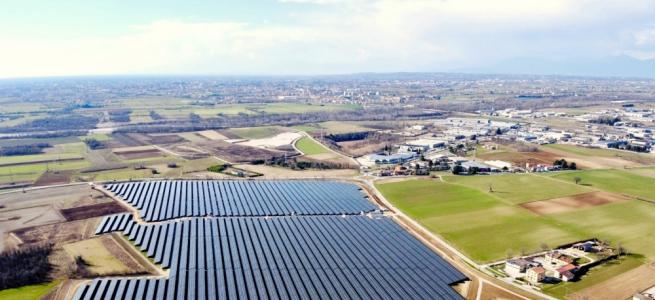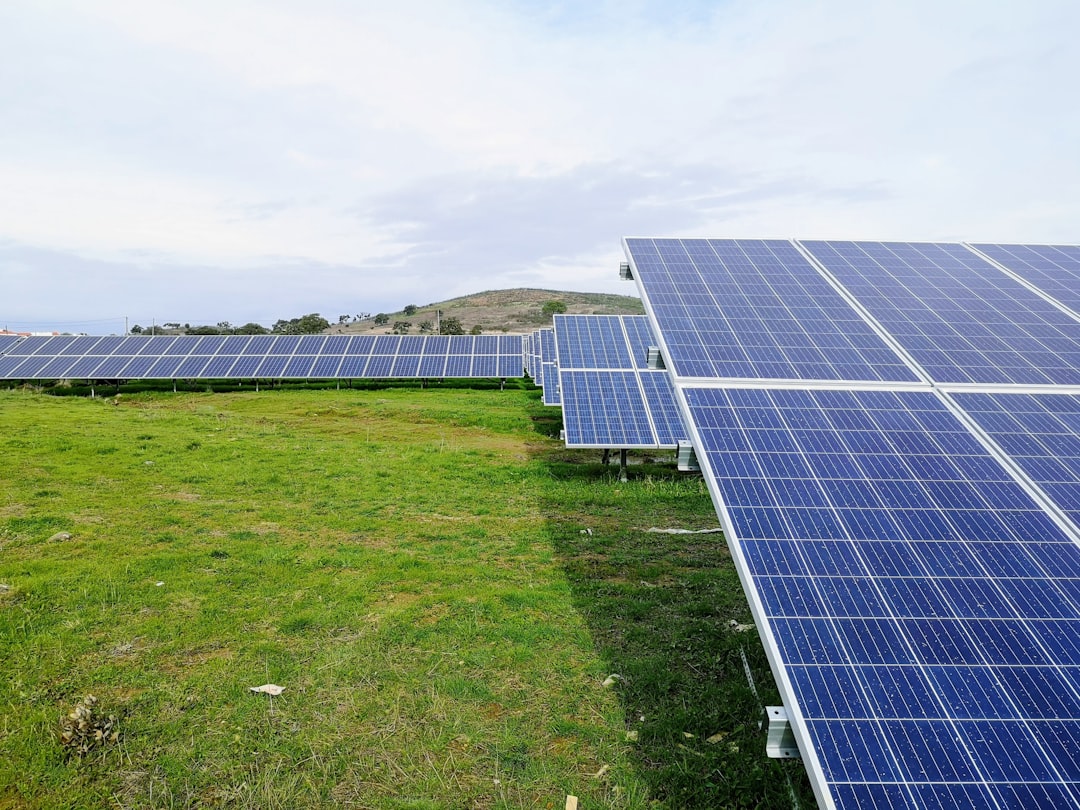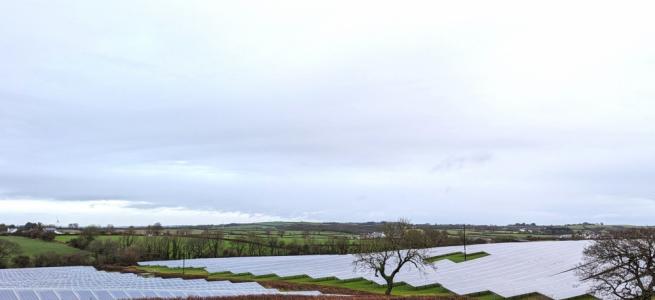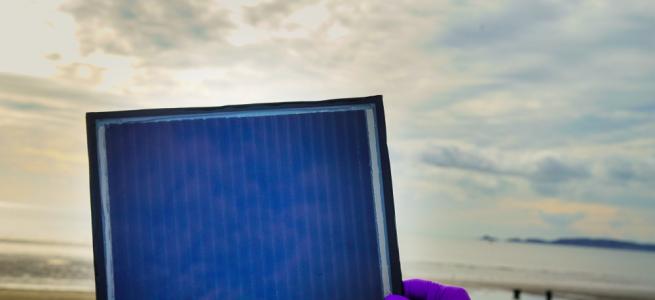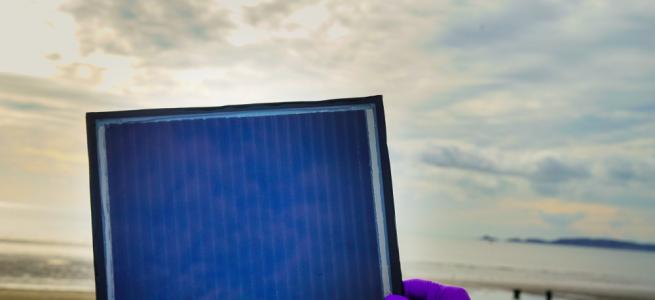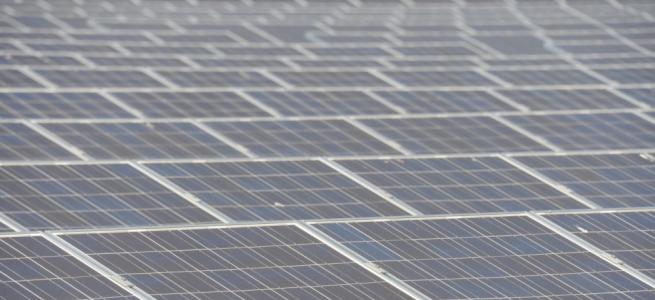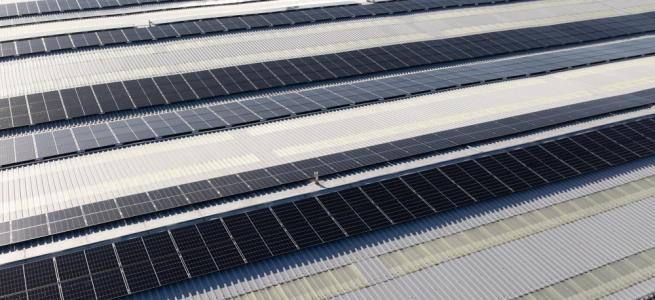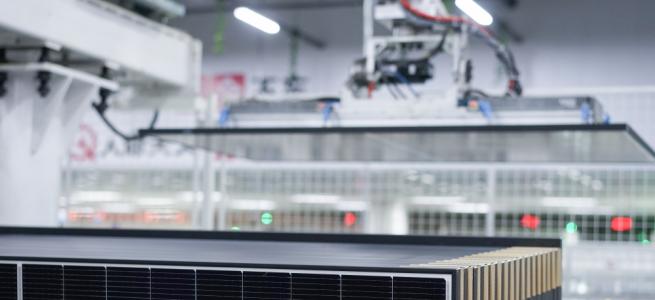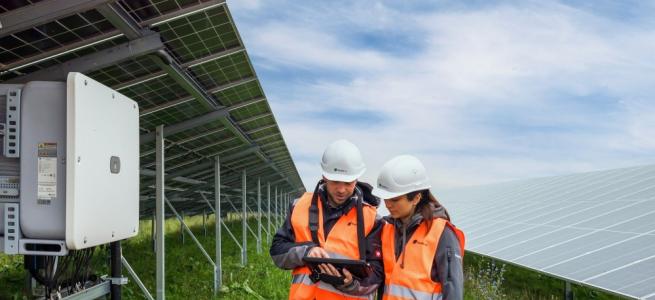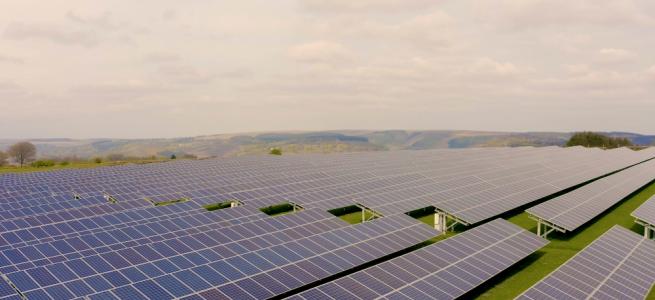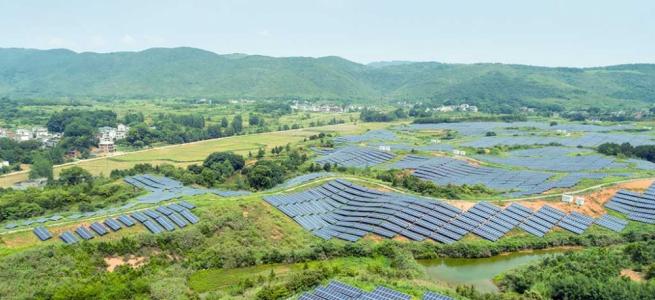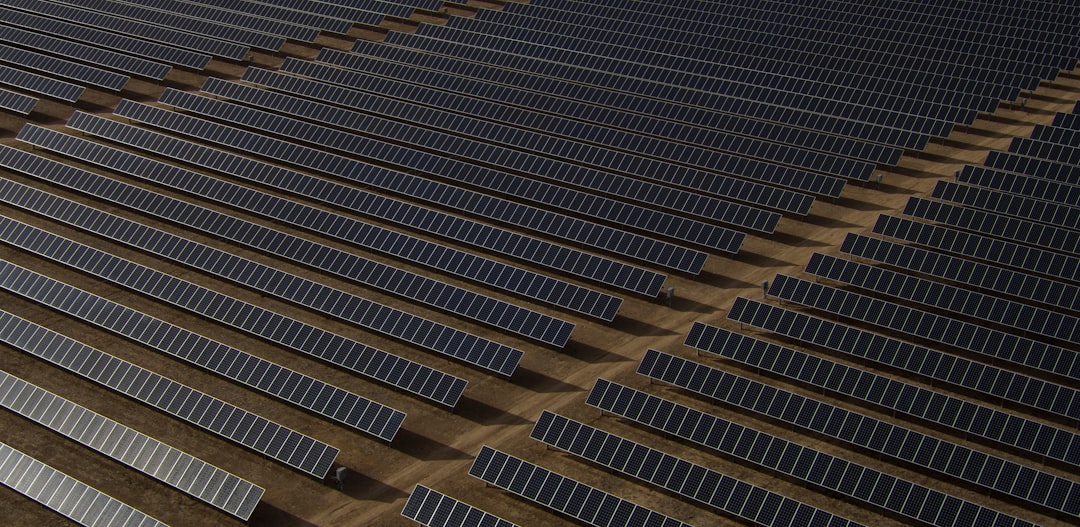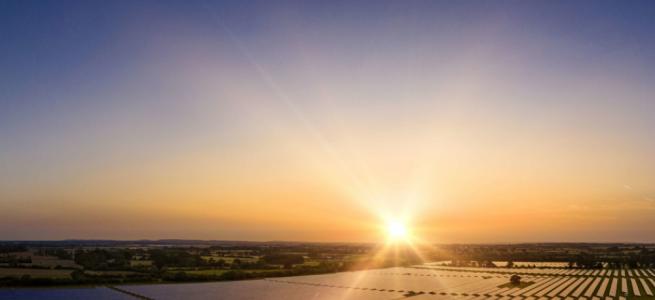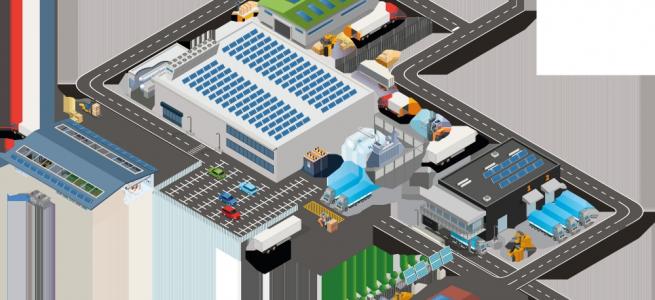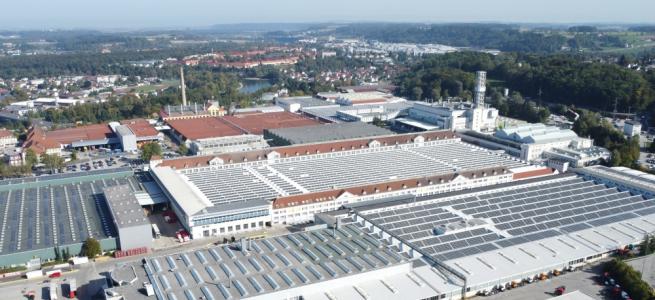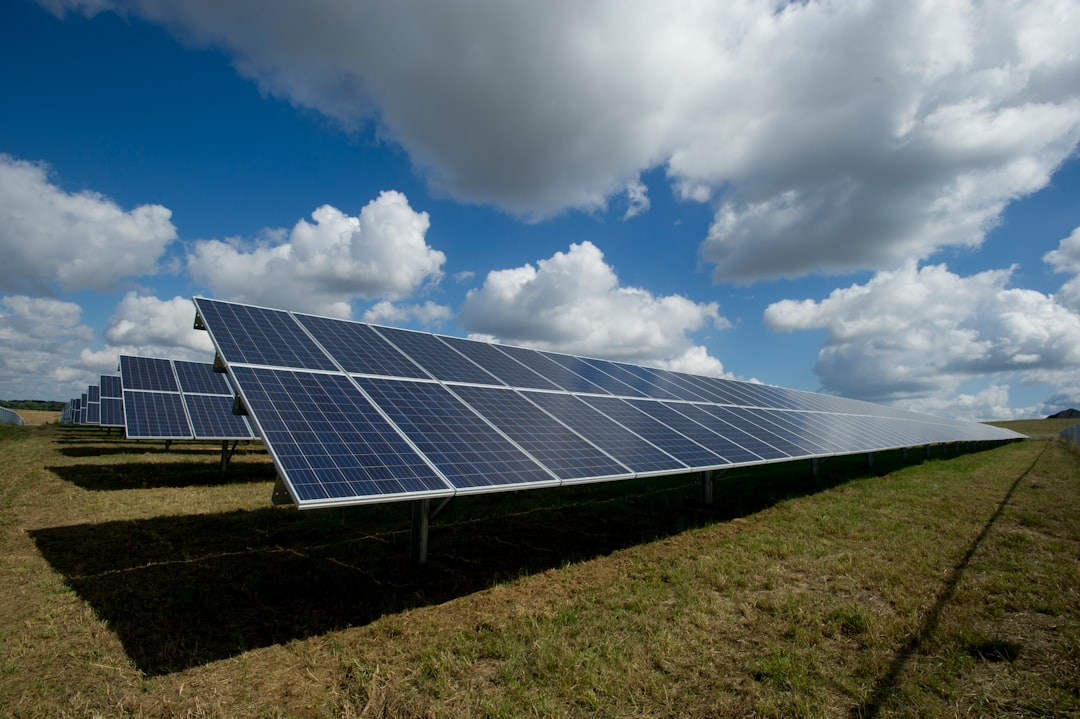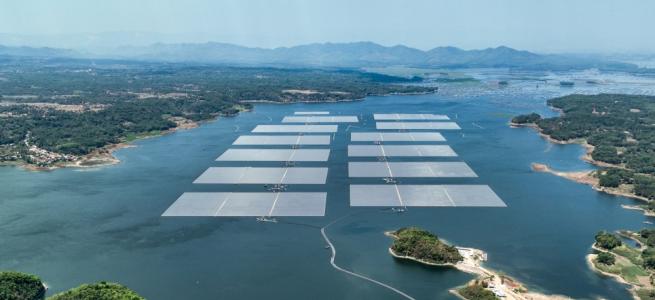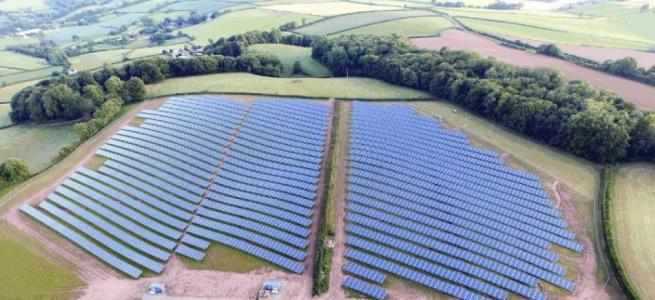News Article
PV costs could fall 50 percent by 2030
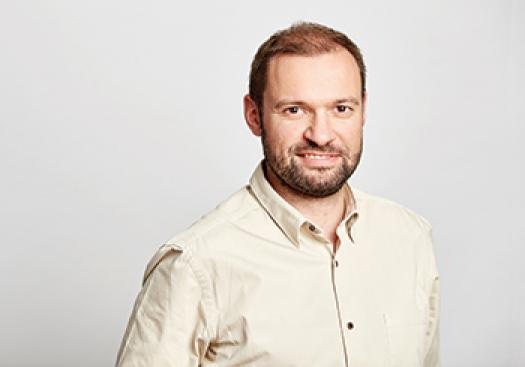
KIC InnoEnergy predict that PV energy costs could fall as much as 50 percent by 2030. Their online Delphos modeling tool is designed to aid industry and finance in evaluating how diverse factors will impact future energy ecosystems.
Solar + Power Management recently spoke with Emilien Simonot, KIC InnoEnergy's Renewable Energy Technology Officer about his organization's new Delphos modeling tool. Using the software "“ available free to anyone who registers "“ enabled KIC InnoEnergy to predicts that solar energy innovations in conventional c-Si cells, their high-efficiency variants and thin film technology could reduce PV costs as much as 50 percent in the next 15 years. KIC describes the new tool as an important step in helping analysts, investors, academia and manufacturers understand how the levelized cost of electricity (LCOE) will likely be impacted by more than 30 forms of PV innovation and other energy generation systems.
Solar + Power Management recently spoke with Emilien Simonot, KIC InnoEnergy's Renewable Energy Technology Officer about his organization's new Delphos modeling tool. Using the software "“ available free to anyone who registers "“ enabled KIC InnoEnergy to predicts that solar energy innovations in conventional c-Si cells, their high-efficiency variants and thin film technology could reduce PV costs as much as 50 percent in the next 15 years. KIC describes the new tool as an important step in helping analysts, investors, academia and manufacturers understand how the levelized cost of electricity (LCOE) will likely be impacted by more than 30 forms of PV innovation and other energy generation systems.
Q: The impact of new technology "“ especially when it affects global energy needs "“ can be a contentious subject. Incumbent energy producers have a perspective, while technology innovators have another view of how their solutions may affect supply, distribution and cost. What motivated KIC InnoEnergy to develop its new Delphos modeling tool?
A: Incumbents have in fact been traditionally at the forefront of knowledge and innovation in their respective sectors. However, the past 20 years have seen an increase of "cheap capacity" through computing, prototyping and the internet which have produced the emergence of a highly dynamic "innovation ecosystem." Incumbents are certainly affected by disruptive ideas and radically new business models, but at the same time they closely monitor new, fast growing and dynamic sources of innovation in processes, services or products. This process of integrating innovative solutions to already existing businesses is a challenge, not least in streamlining the integration process so that once an innovation of high value has been identified, it is adopted quicker. KIC InnoEnergy is here to support this process, ensuring availability of resources, to push ideas forward. But also by bringing thought leadership to help existing players identify opportunities in the energy ecosystem - Delphos is one part of the strategy. It is the toolbox that KIC InnoEnergy is making available to determine the value of an innovative product, service or process. The Delphos modelling tool works in four renewable energy technologies "“ PV, Wind (onshore and offshore) and Solar Thermal Electricity. It assesses the impact of an innovation on the Levelised Cost of Energy (LCOE), one of the key parameters to help decision makers understand the business case for a given innovation.
Q: Is the Delphos tool designed primarily for renewable energy manufacturers, incumbents, researchers, trade groups or some combination?
A: We identified three main targets for the Delphos tool: SMEs and research organisations in renewable energy. They are usually specialised and working in very specific sub-sectors of the industry and so can often miss the full picture of the technology they are working on. Delphos brings them a credible set of data and robust modelling capacity that allows them to better understand the impact of their innovations on the value chain and how it could solve existing needs. Strategically, Delphos can be used to support a business model definition and to demonstrate value proposition from the cost perspective.
The larger players may have their own expertise in evaluating the impact that concrete innovation could have on their processes. In this case, Delphos provides basic impact analysis and can be used as a reference tool to support collaboration strategies with third party partners. Some more applications might be found in the financing or public sector as Delphos provides a common ground to discuss impact analyses and can serve as support from the strategic management to help programme definition, right down to the operative management at the project or investment level.
Q: How does the Delphos tool compare to other modeling instruments now available? For example: the role of more than 30 technological innovations is mentioned "“ Is this unique to Delphos?
A: There are no other existing tools like Delphos that combine both a pre-established set of data (including cost structures of power plants and the estimated impact of innovation) with such a robust modeling capacity. The main alternatives available to the market are tailored to consulting services. In-house developments are also possible but are time-consuming and require a big effort to secure reliable data.
Q: One of the most challenging aspects of predicting the future of any technology is the large number of variables beyond the purely technological that can impact how a product or family of devices may mature and interact with other technologies. How does KIC InnoEnergy plan to handle changes that materialize over the next 3 to 15 years?
A: Knowledge grows every day and technology changes fast. This is why the value of publishing a report on the technological impact on cost only lies in giving a fixed picture at a certain moment in time, based on a specific expert vision. The results presented in a report might get outdated quickly but this is where Delphos really enters into the game. Delphos offers methodology support so you can modify your assumptions and adapt them to what your own experience tells you.
Q: In the report, "Future renewable energy costs: solar photovoltaics," the conclusion mentions that while purely technical improvements in polysilicon materials, manufacturing and efficiency enhancements are widely recognized as driving lower LCOE, other factors (though small) could significantly impact its success. One example was better PV plant output forecasting and the potential to significantly increase the value of PV electricity relative to overall power grid integration. Could you elaborate?
A: As the PV installed capacity keeps growing, the penetration of PV electricity in our energy mixes will increase. This brings with it the challenges of integrating PV electricity into our power systems. Production forecasting is a key element of this as it provides reliable information to the power system and market operators. This allows them to manage grids and markets in the safest conditions and at the lowest cost. Another key element in this equation is energy storage that provides regulation capacity, even if it was not part of our study.
Q: One aspect of PV energy production that will impact how well renewables integrate with legacy generation is storage. While on-site storage for self-consumption is becoming more affordable, it is still expensive. There are also the larger, grid-scale issues tied to storing power during peak generation phases, levelising needs, and so forth. How does the Delphos modeling tool look at storage issues?
A: Currently Delphos does not look at storage, but KIC InnoEnergy is eager to extend the model into this area. With that in mind any serious players or researchers interested in the storage sector industry are welcome to join this initiative!
Q: Does the Delphos tool take into consideration technologies that are in their relative infancy now, such as perovskites? Since perovskites are rapidly evolving, how might developments here impact long-range projections for lower LCOE?
A: Delphos focuses on commercially available technologies which with respect to PV, translates into mainstream technologies (crystalline silicone & thin film). "Commercially available" means that it is technically possible to use such technology in volume, and that they have been sufficiently prototyped and demonstrated to have a reasonable prospect of sale into a commercial scale project. Typically, perovskites and organic PV (for example) have not reached this stage yet.
Q: Another point made in the report indicates that market confidence will need to remain high and relatively continual in order to keep capex investments sustainable in a market where it appears that average module selling prices (and margins) will fall over the next 15 years. Can you elaborate on the "˜best' conditions the model points to for continued investment and expansion of PV energy capacity?
A: Each country, each market has its specificities: regulation, solar resource, supply chain optimisation, and so on - which makes it difficult to generalise. In fact, local specificities were not taken into account in our report and, in our assumptions, we referred to global trends as detailed in international studies of reference. Having said that, the importance of long term vision and predictability should be highlighted as it allows to generate a virtuous cycle, notably: A business case secured for investors, a predictable market, and sustained equipment sales, make investment in upgrading the production facilities more viable and allow for improvement in equipment (higher quality, lower price) all leading to an improved business case for investors. Europe is currently the PV knowledge and technology leader worldwide and home to several reference research institutions. But the lack of an industry to which this technology can be transferred in a commercial way is threatening our leadership. Several initiatives are on track to jump from labs and pilot lines to industrial scale but the lack of coordinated support on issues like risk investment (both private and public) coupled with a lack of regulatory stability is preventing them from developing properly.
Q: The initial report points to the conclusion that, ""¦the current massively used conventional crystalline silicon technology is anticipated to be partly replaced in the future by different options such as high efficiency c-Si technology and also by thin film technology"¦." in part because these technologies are better suited to market requirements that are not as well met by existing tech. Are thin film and c-Si tech efficiencies going to have to improve greatly to achieve this, or will their ability to bring PV to areas that do not now have it drive adoption, or both?
A: Efficiency is only one part of the equation and definitely not an objective per se from a business perspective. Efficiency improvement is obviously a target, but should always be balanced by the question: at what cost? Efficiencies are of course improving and those results are continuously being transferred to commercial products, which together with the improvement on costs, contribute positively to the reductions in the Levelised Cost of Energy that PV technology has experienced in the past years. In order to reach new markets in new geographical locations, the quality of the hardware is of course key, but other factors also enter into the equation. These include: i) the cost of financing, which can vary greatly according to "country risk" as defined by financing entities, ii) the structure of the supply chain and its degree of optimisation, iii) the connection costs to electricity grids.
Q: What is the greatest benefit of the Delphos modeling tool? Can you explain how this will benefit manufacturers and investors looking for opportunities in the solar/photovoltaic market?
A: Delphos' main benefit is that it provides a reference tool to structure the dialogue between PV innovators, OEMs, investors and public programmes. Some of them will use it to define their strategy, others to calculate impact, others to manage their portfolio. It will bring a unique opportunity to use the same fundamental information and methodology, what we call "speaking the same language".
Q: Is there anything to add that we have not already covered?
A: This document and the Delphos tool are part of a series of reports on the impact of innovation on the cost of renewable energies, including onshore and offshore wind, as well as solar-thermal electricity. Its objective is to position KIC InnoEnergy as a point of reference in innovation and in innovation impact evaluation. The latter is a new approach that is not widely implemented but can help in decision making at all levels.
A: Incumbents have in fact been traditionally at the forefront of knowledge and innovation in their respective sectors. However, the past 20 years have seen an increase of "cheap capacity" through computing, prototyping and the internet which have produced the emergence of a highly dynamic "innovation ecosystem." Incumbents are certainly affected by disruptive ideas and radically new business models, but at the same time they closely monitor new, fast growing and dynamic sources of innovation in processes, services or products. This process of integrating innovative solutions to already existing businesses is a challenge, not least in streamlining the integration process so that once an innovation of high value has been identified, it is adopted quicker. KIC InnoEnergy is here to support this process, ensuring availability of resources, to push ideas forward. But also by bringing thought leadership to help existing players identify opportunities in the energy ecosystem - Delphos is one part of the strategy. It is the toolbox that KIC InnoEnergy is making available to determine the value of an innovative product, service or process. The Delphos modelling tool works in four renewable energy technologies "“ PV, Wind (onshore and offshore) and Solar Thermal Electricity. It assesses the impact of an innovation on the Levelised Cost of Energy (LCOE), one of the key parameters to help decision makers understand the business case for a given innovation.
Q: Is the Delphos tool designed primarily for renewable energy manufacturers, incumbents, researchers, trade groups or some combination?
A: We identified three main targets for the Delphos tool: SMEs and research organisations in renewable energy. They are usually specialised and working in very specific sub-sectors of the industry and so can often miss the full picture of the technology they are working on. Delphos brings them a credible set of data and robust modelling capacity that allows them to better understand the impact of their innovations on the value chain and how it could solve existing needs. Strategically, Delphos can be used to support a business model definition and to demonstrate value proposition from the cost perspective.
The larger players may have their own expertise in evaluating the impact that concrete innovation could have on their processes. In this case, Delphos provides basic impact analysis and can be used as a reference tool to support collaboration strategies with third party partners. Some more applications might be found in the financing or public sector as Delphos provides a common ground to discuss impact analyses and can serve as support from the strategic management to help programme definition, right down to the operative management at the project or investment level.
Q: How does the Delphos tool compare to other modeling instruments now available? For example: the role of more than 30 technological innovations is mentioned "“ Is this unique to Delphos?
A: There are no other existing tools like Delphos that combine both a pre-established set of data (including cost structures of power plants and the estimated impact of innovation) with such a robust modeling capacity. The main alternatives available to the market are tailored to consulting services. In-house developments are also possible but are time-consuming and require a big effort to secure reliable data.
Q: One of the most challenging aspects of predicting the future of any technology is the large number of variables beyond the purely technological that can impact how a product or family of devices may mature and interact with other technologies. How does KIC InnoEnergy plan to handle changes that materialize over the next 3 to 15 years?
A: Knowledge grows every day and technology changes fast. This is why the value of publishing a report on the technological impact on cost only lies in giving a fixed picture at a certain moment in time, based on a specific expert vision. The results presented in a report might get outdated quickly but this is where Delphos really enters into the game. Delphos offers methodology support so you can modify your assumptions and adapt them to what your own experience tells you.
Q: In the report, "Future renewable energy costs: solar photovoltaics," the conclusion mentions that while purely technical improvements in polysilicon materials, manufacturing and efficiency enhancements are widely recognized as driving lower LCOE, other factors (though small) could significantly impact its success. One example was better PV plant output forecasting and the potential to significantly increase the value of PV electricity relative to overall power grid integration. Could you elaborate?
A: As the PV installed capacity keeps growing, the penetration of PV electricity in our energy mixes will increase. This brings with it the challenges of integrating PV electricity into our power systems. Production forecasting is a key element of this as it provides reliable information to the power system and market operators. This allows them to manage grids and markets in the safest conditions and at the lowest cost. Another key element in this equation is energy storage that provides regulation capacity, even if it was not part of our study.
Q: One aspect of PV energy production that will impact how well renewables integrate with legacy generation is storage. While on-site storage for self-consumption is becoming more affordable, it is still expensive. There are also the larger, grid-scale issues tied to storing power during peak generation phases, levelising needs, and so forth. How does the Delphos modeling tool look at storage issues?
A: Currently Delphos does not look at storage, but KIC InnoEnergy is eager to extend the model into this area. With that in mind any serious players or researchers interested in the storage sector industry are welcome to join this initiative!
Q: Does the Delphos tool take into consideration technologies that are in their relative infancy now, such as perovskites? Since perovskites are rapidly evolving, how might developments here impact long-range projections for lower LCOE?
A: Delphos focuses on commercially available technologies which with respect to PV, translates into mainstream technologies (crystalline silicone & thin film). "Commercially available" means that it is technically possible to use such technology in volume, and that they have been sufficiently prototyped and demonstrated to have a reasonable prospect of sale into a commercial scale project. Typically, perovskites and organic PV (for example) have not reached this stage yet.
Q: Another point made in the report indicates that market confidence will need to remain high and relatively continual in order to keep capex investments sustainable in a market where it appears that average module selling prices (and margins) will fall over the next 15 years. Can you elaborate on the "˜best' conditions the model points to for continued investment and expansion of PV energy capacity?
A: Each country, each market has its specificities: regulation, solar resource, supply chain optimisation, and so on - which makes it difficult to generalise. In fact, local specificities were not taken into account in our report and, in our assumptions, we referred to global trends as detailed in international studies of reference. Having said that, the importance of long term vision and predictability should be highlighted as it allows to generate a virtuous cycle, notably: A business case secured for investors, a predictable market, and sustained equipment sales, make investment in upgrading the production facilities more viable and allow for improvement in equipment (higher quality, lower price) all leading to an improved business case for investors. Europe is currently the PV knowledge and technology leader worldwide and home to several reference research institutions. But the lack of an industry to which this technology can be transferred in a commercial way is threatening our leadership. Several initiatives are on track to jump from labs and pilot lines to industrial scale but the lack of coordinated support on issues like risk investment (both private and public) coupled with a lack of regulatory stability is preventing them from developing properly.
Q: The initial report points to the conclusion that, ""¦the current massively used conventional crystalline silicon technology is anticipated to be partly replaced in the future by different options such as high efficiency c-Si technology and also by thin film technology"¦." in part because these technologies are better suited to market requirements that are not as well met by existing tech. Are thin film and c-Si tech efficiencies going to have to improve greatly to achieve this, or will their ability to bring PV to areas that do not now have it drive adoption, or both?
A: Efficiency is only one part of the equation and definitely not an objective per se from a business perspective. Efficiency improvement is obviously a target, but should always be balanced by the question: at what cost? Efficiencies are of course improving and those results are continuously being transferred to commercial products, which together with the improvement on costs, contribute positively to the reductions in the Levelised Cost of Energy that PV technology has experienced in the past years. In order to reach new markets in new geographical locations, the quality of the hardware is of course key, but other factors also enter into the equation. These include: i) the cost of financing, which can vary greatly according to "country risk" as defined by financing entities, ii) the structure of the supply chain and its degree of optimisation, iii) the connection costs to electricity grids.
Q: What is the greatest benefit of the Delphos modeling tool? Can you explain how this will benefit manufacturers and investors looking for opportunities in the solar/photovoltaic market?
A: Delphos' main benefit is that it provides a reference tool to structure the dialogue between PV innovators, OEMs, investors and public programmes. Some of them will use it to define their strategy, others to calculate impact, others to manage their portfolio. It will bring a unique opportunity to use the same fundamental information and methodology, what we call "speaking the same language".
Q: Is there anything to add that we have not already covered?
A: This document and the Delphos tool are part of a series of reports on the impact of innovation on the cost of renewable energies, including onshore and offshore wind, as well as solar-thermal electricity. Its objective is to position KIC InnoEnergy as a point of reference in innovation and in innovation impact evaluation. The latter is a new approach that is not widely implemented but can help in decision making at all levels.


